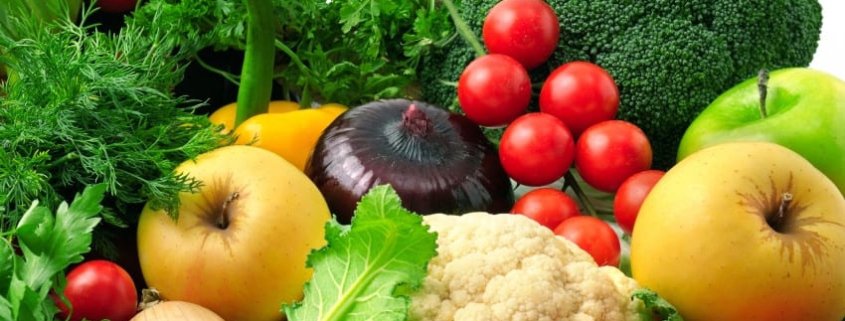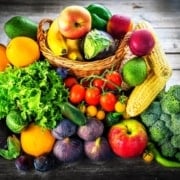Adults Not Meeting Daily Value of Fruits and Vegetables
Eating more fruits and vegetables reduces the risk of heart disease, strokes, some cancers, and also adds vital nutrients to our diets. When consumed in place of more energy-dense foods, vegetables and fruits can help in managing body weight. It is recommended that adults who engage in less than 30 minutes of moderate physical activity should consume 2 – 3 cups of vegetables and 1.5 – 2.0 cups of fruits daily.
There are two methods of determining the daily vegetable and fruit intake recommendations for adults who engage in less than 30 minutes of moderate physical activity daily. The first is the Behavioral Risk Factor Surveillance System (BRFSS) while the other is based on the Dietary Guidelines for Americans and is expressed in cup equivalents. However, a recent study conducted during 2007 – 2010 found that half of the total U.S. population consumed less than 1.5 cups of vegetables and less than one cup of fruit daily; 87 percent did not meet the daily value recommendations, and 76 percent did not meet fruit intake recommendations. National estimates indicate low fruit and vegetable consumption with substantial variation by state.
CDC’s Model Says Fruits and Vegetables Intake is Abysmal
 Vegetable and fruit consumption information are available from the Behavioral Risk Factor Surveillance System (BRFSS), which is the sole source of dietary surveillance information for most states. However, the federal vegetable and fruit intake recommendations, expressed in cup equivalents are not directly comparable to the frequency of input captured by BRFSS.
Vegetable and fruit consumption information are available from the Behavioral Risk Factor Surveillance System (BRFSS), which is the sole source of dietary surveillance information for most states. However, the federal vegetable and fruit intake recommendations, expressed in cup equivalents are not directly comparable to the frequency of input captured by BRFSS.
The Center for Disease Control (CDC) did an analysis of the median daily frequency of vegetable and fruit intake based on BRFSS’s 2013 data for the District of Columbia and the 50 states. They applied newly developed prediction equations to BRFSS to calculate the percentage of the population of each state that meets vegetable and fruit intake recommendations. The result was a bit disturbing. Overall, only 13.1 percent of the participants met the recommended fruit intake, ranging from 17.7 percent in California to 7.5 percent in Tennessee, and 8.9 percent met the recommended vegetable intake, ranging from 13.0 percent in California to 5.5 percent in Mississippi. What this means is that a lot of effort is needed to build consumer demand for vegetables and fruits through placement, competitive pricing, and promotion in schools, child care, grocery stores, worksites, and communities.
Since vegetable and fruit consumption is currently low across all states and affects multiple health outcomes, continued efforts are needed to increase demand and consumption. Improving intake during childhood might be the key to improving fruits and vegetables consumption for adults.
Inspired by cdc.gov
NutriFusion® to the Rescue
All the research points to the health and nutrition benefits of consuming fruits and vegetables on a daily basis. The problem is we are not doing a good job as a society in encouraging that behavior and making fruit and vegetable nutrition readily available. This study by the CDC speaks to why we do what we do. Our special blends give consumer packaged food companies, beverage companies, and supplement companies the ability to incorporate natural nutrition from fruits and vegetables into their products. NutriFusion® is processing stable meaning that it can withstand the heating and cooling of modern day food processing. The NutriFusion® innovation is leading a revolution in the food industry to use simpler ingredients and make some of our favorite foods much better for us. If you are interested in learning more about NutriFusion® for your processed foods, beverages, or supplements, please click below.





